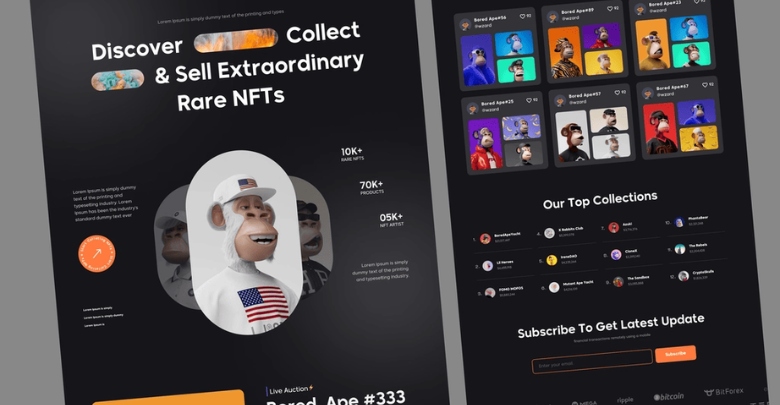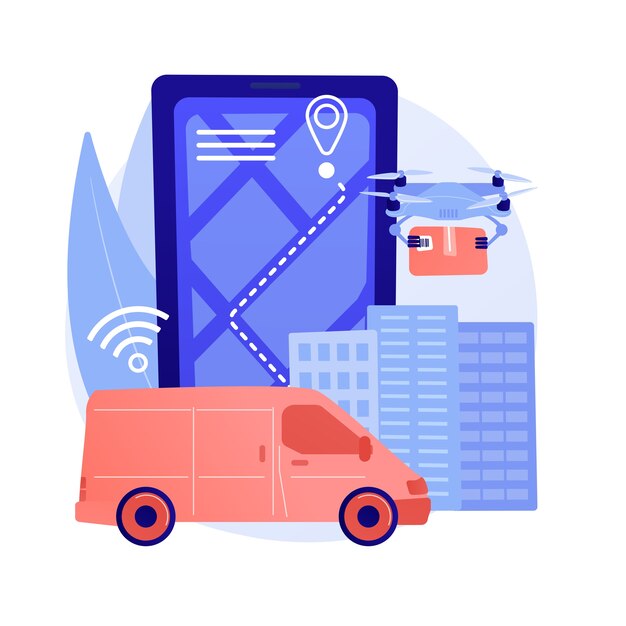NFTs are causing a buzz in the digital world, reshaping how we view and trade unique digital assets. Think of them as digital fingerprints, each one distinct and irreplaceable. These NFTs represent ownership and authenticity, and they’re taking the digital art world by storm. But let’s delve into what NFT marketplaces are all about and why they matter.
The NFT Phenomenon
NFTs have gained major traction in recent years. They’re exceptional digital assets that prove ownership or authenticity. Unlike cryptocurrencies like Bitcoin or Ethereum, NFTs are unique. They can represent a wide range of items, from digital artwork to music, virtual real estate, and collectibles. The digital art realm was one of the first to jump on the NFT train, with artists and collectors flocking to NFT marketplaces.
The Tech Behind NFTs
Blockchain technology is the engine driving NFTs. It’s a decentralized ledger that records transactions transparently and securely. Each NFT is created using smart contracts, which are self-executing agreements with the contract terms written into code. Ethereum is the preferred blockchain for NFTs, thanks to its robust smart contract capabilities.
NFT Marketplaces: The Virtual Auction House
NFT marketplaces serve as the online hub for buying, selling, and trading NFTs. These platforms are where digital art enthusiasts, collectors, and creators gather to engage with these unique digital assets. The top NFT marketplaces include OpenSea, Rarible, and SuperRare.
1. OpenSea: The Big Player
OpenSea is the heavyweight champion of NFT marketplaces. It’s where you’ll find a diverse range of NFTs, from digital art to virtual real estate. Whether you’re looking to create, buy, sell, or trade NFTs, OpenSea’s got you covered.
2. Rarible: The Creator’s Haven
Rarible distinguishes itself as a decentralized marketplace, allowing users to create and sell their NFTs. This empowers artists to manage their digital assets from creation to sale, putting them in the driver’s seat.
3. SuperRare: Where Art Takes the Stage
SuperRare is a hotspot for digital art. Artists can display their work and earn royalties on resales. This innovative approach has attracted talent from around the globe.
NFT Marketplace Perks
NFT marketplaces come packed with benefits for both creators and collectors:
1. Ownership and Provenance: NFTs offer a secure and transparent method to establish ownership and authenticity. The blockchain keeps a trail of every transaction, making it easy to trace an NFT’s history.
2. Accessibility: These marketplaces open up the art world to anyone with an internet connection. This democratizes the art scene, giving artists and collectors from all walks of life a piece of the pie.
3. Royalties: Creators can earn royalties on the resale of their NFTs, ensuring they continue to benefit as their work appreciates in value.
4. Fractional Ownership: High-value NFTs can be divided into smaller fractions, making it more feasible for individuals to invest in these valuable assets.
5. Interoperability: NFTs aren’t just for show. They’re usable in various virtual worlds and games, offering real utility beyond mere ownership.
NFTs and the Art World
NFTs have revolutionized the art and creative industries, impacting them in several key ways:
1. Empowering Artists: NFTs give artists a fresh avenue to monetize their work directly, sidestepping galleries and intermediaries. It ushers in a more direct and equitable relationship between creators and their audiences.
2. Accessibility: NFTs make art accessible globally. Anyone with an internet connection can explore and invest in digital art, extending the reach of artists and the art market.
3. Royalties: NFTs bring a new revenue stream for artists. Earning royalties on secondary sales ensures that artists can continue to reap rewards from their work’s growing value.
4. Art Curation: NFT marketplaces serve as curated spaces where collectors can discover both emerging and established artists. This offers new opportunities for artists to gain recognition and build a following.
NFTs in the Gaming Arena
NFTs aren’t limited to the art world; they’re a force to be reckoned with in gaming too. Here’s how they’re transforming the gaming landscape:
1. Ownership of Virtual Assets: Gamers can finally own in-game items, characters, and virtual real estate. This ownership extends beyond a single game, enabling players to trade and use their assets in various virtual worlds.
2. Play-to-Earn: NFTs are at the core of the play-to-earn model, where gamers can earn NFTs by excelling in virtual environments. These NFTs can be sold or traded, adding real-world value to in-game achievements.
3. Digital Collectibles: Many blockchain-based games offer digital collectibles as NFTs. These collectibles are limited in supply and can be bought, sold, or traded on NFT marketplaces.
4. Virtual Real Estate: NFTs represent ownership of virtual real estate in games and virtual worlds. These properties can be developed, rented, and sold, creating a thriving virtual real estate market.
Environmental Concerns
While NFTs have been a game-changer, they’ve also sparked environmental concerns. Many NFTs are minted on the Ethereum blockchain, which relies on a proof-of-work (PoW) consensus mechanism known for its energy consumption. To address these concerns, some NFT marketplaces are exploring eco-friendly alternatives like proof-of-stake (PoS) or layer-2 scaling solutions.
Challenges in the NFT Space
The NFT space isn’t all sunshine and roses; it faces several challenges:
1. Copyright and Plagiarism: Some artists have seen their work minted as NFTs without their consent, raising questions about copyright and plagiarism in the digital art world.
2. Scams and Fraud: Scams are a real threat in the NFT space, from fake NFTs to phishing attacks. Vigilance and due diligence are a must when engaging in NFT transactions.
3. Speculation and Hype: NFT prices can be highly speculative, leading to price volatility and the risk of investment bubbles.
4. Market Saturation: The growing number of NFT marketplaces and projects can lead to market saturation and fragmentation, making it challenging for creators and collectors to navigate the space effectively.
Creating an NFT Marketplace: A World of Opportunity
If you’re looking to get in on the action and create your own NFT marketplace, there’s a world of opportunity waiting for you. Whether you’re an artist aiming to build a platform for fellow creators or a business entrepreneur exploring the NFT marketplace development landscape, this burgeoning industry holds immense potential.
To bring your vision to life, you can seek the expertise of an NFT marketplace development company. These specialized firms can guide you through the intricate process of building a secure, user-friendly platform, ensuring that you’re well-equipped to navigate the exciting world of NFTs. Whether you’re diving into the NFT marketplace as a creator, collector, or entrepreneur, there’s no denying that NFTs are unlocking a digital revolution that’s here to stay.
The Future of NFTs
Despite these challenges, NFTs continue to evolve and hold immense potential. The future is bright, with increased interoperability, enhanced utility, sustainability, and a focus on education and regulation. NFTs aren’t just a trend; they represent a fundamental shift in how we engage with and value digital assets. Whether you’re an artist looking to showcase your work or a collector in search of unique digital treasures, NFT marketplaces offer a gateway to the digital revolution.





